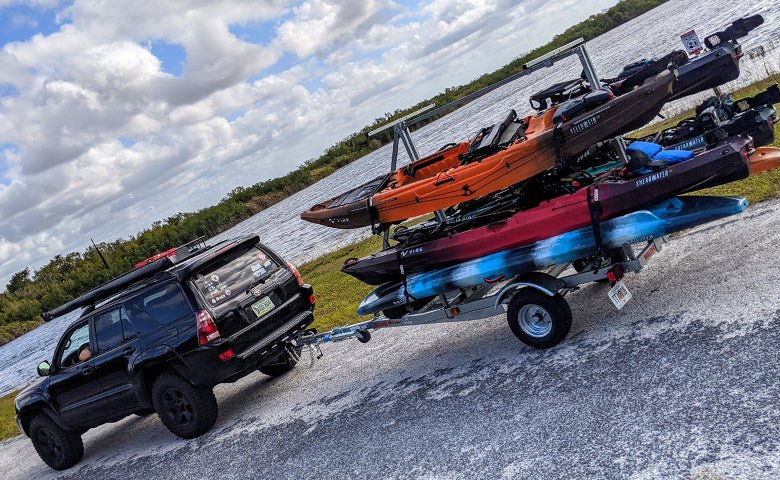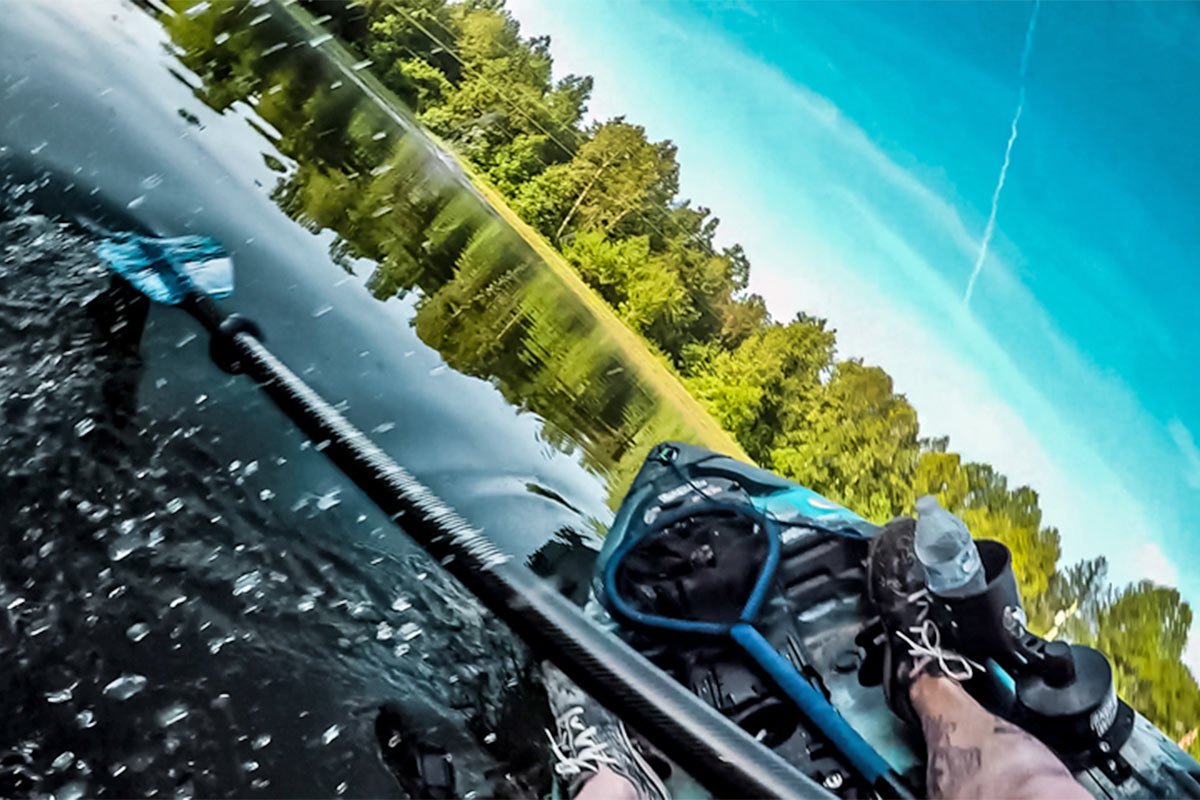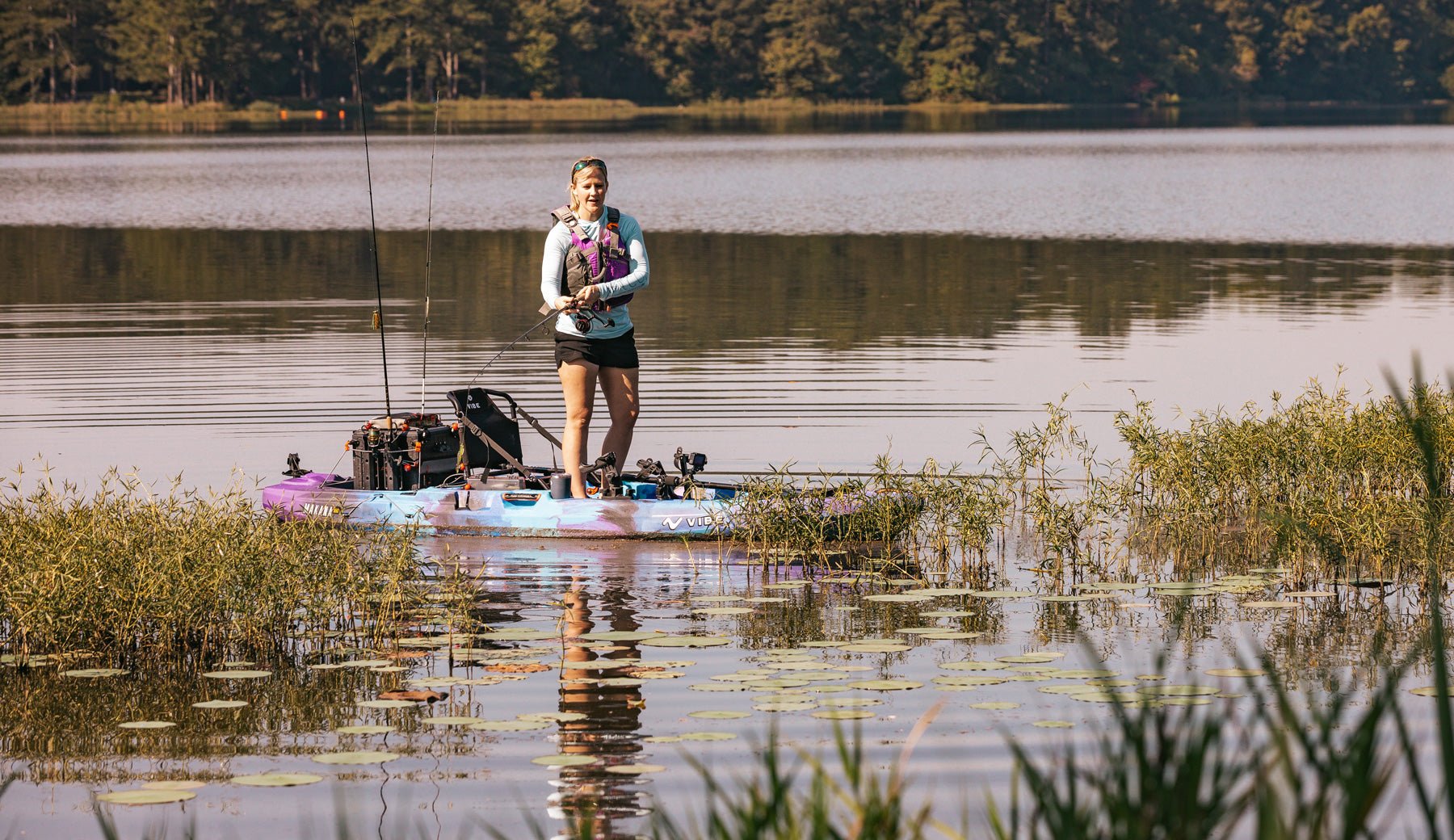How to Choose a Cartop Kayak Transport Option

Do you know how to transport a fishing kayak safely, comfortably, and easily?
Whether you’re carrying your kayak on top of a vehicle, or by hand to and from the water, here are a few tips and solid advice from the kayak experts here at Vibe to ensure you have no drama and all adventure.
How To Transport Your Kayak With A Vehicle
Truck & Bed Extender
The easiest option is a pickup truck; using what is called a bed extender - a lightweight piece that you Insert into your vehicles hitch receiver that makes it very easy to load and unload up to two kayaks by yourself, and strap down tight using straps or ropes. This will support your boat(s) so the portion hanging off the back of your vehicle is secure.
Trailer
A trailer is the second easiest way to transport a kayak. If you have the means, a trailer is very easy, quick, and versatile for taking a kayak from point A to point B.
On A Car or SUV
Putting a kayak securely and safely on top of a car or SUV is a bit trickier, but it's by far the most common means of transporting and carrying a kayak, so you might as well learn how to do it right! Some vehicles are equipped with a roof rack, others are not so the first step is determining which one applies to you.
With A Roof Rack
There are a few key items you'll need:
- Crossbars (which run perpendicular to the factory-installed roof rack)
- Kayak foam blocks (or the more expensive, but super-useful J Bars or Stacker Bars - see below)
- Cam straps (for each kayak you'll want two straps at least 12 feet long)
- Bow and Stern lines rope (non-stretch and waterproof)
Put the kayak foam pad onto the front and back crossbars. Once you lift the kayak into position on top of your vehicle (see below, "Loading A Kayak With Two People" or "Loading a Kayak By Yourself") then you'll use the cam straps and rope to secure the kayak to your vehicle.
Without A Roof Rack
If you don't have a roof rack (and don't want to buy/install an after-market one) then doing a Google search for a "soft rack" that quickly attaches to your car through the driver and passenger doors - provided it's a four-door car - is an option, but if the soft rack doesn't give the kayak enough clearance, or if you have fishing gear rigged up, you may end up scratching your paintwork. DIY options aren't safe, nor recommended at all.
Tip: If you don't have a rigid roof rack and you want to buy an after-market solution, make sure your vehicle is compatible with that brand and model before you buy it. There are a lot of roof rack reference sites online, a quick search for your vehicles make and model along with the phrase “roof rack” will yield results.
Cool roof options:
A J-bar acts as a sort of easy kayak cradle you strap the kayak in, and allows either one or two kayaks on top.
If you are stacking multiple kayaks, you should use extra straps for each yak - doing so gives you extra points of redundancy, making it less likely that a part failure will cause you to lose your load.
Tip: With J-bars it’s usually easier to put kayaks on the rack while standing next to the vehicle.
Loading A Kayak With Two People
Having someone help you is by far the easiest, safest and best way to load a kayak onto your vehicle.
One person should grab the front of the kayak by the front handle, and the other grab the back handle, and lift it straight up onto the top of the vehicle.
Make sure the kayak is parallel to your vehicle when you place the kayak on the roof, then center the kayak length-wise and width-wise. You want the kayak's weight to be evenly distributed.
Throw the cam straps across the kayak and secure them to the roof rack; making sure to slowly tighten the straps until the straps are firm and taut, but not overly tight. Pro hack: Adding a twist in the straps will reduce wind noise by limiting the harmonic vibration.
Then secure the bow and stern using the rope by tying to your car’s bumpers. For this, you can use a simple tie-down knot or buy a specially made bow/stern tie-down set.
Tip: Be gentle on the cam straps, as you don’t want to crack your kayak’s hull by pulling too tight.
Tip: If you are going somewhere that the kayak might be stolen, or you won't be able to keep an eye on your vehicle, running a cable lock through the scupper, then around the crossbar will give you that extra peace of mind.
How To Transport A Kayak By Hand
Portaging is the term for carrying a kayak by hand. You'll need to do this to get your kayak to and from the water’s edge, or possibly between different bodies of water, such as rivers and lakes, that are near each other but separated by land or obstacles.
If you are by yourself, pick up the kayak by placing your hands over the cockpit edge and lift it over your head so that it's upside down and its weight is balanced over your shoulders. Your head should be where the cockpit is. Make sure the kayak is tilted a bit backward so that you can see where you're going.
Another way to transport a kayak by hand is to use a kayak cart with wheels, which is designed to cradle the hull of the kayak, and then has straps to secure the cart tightly to the kayak. You are then able to pull the kayak using the handle at the far tip of the kayak.
If you have a partner to help you carry - which is optimal - then each of you can simply take a handle or edge at either end of the kayak and lift and carry in the direction you need to go.
Following these steps will ensure that the adventure begins when you hit the water, not on the way there.
No Drama. Just Adventure.



